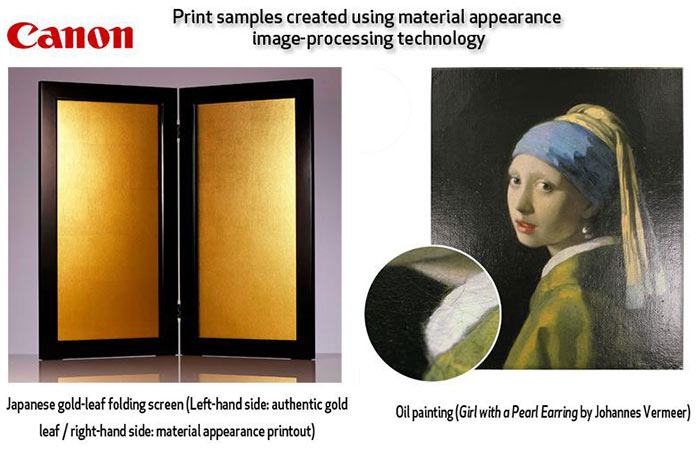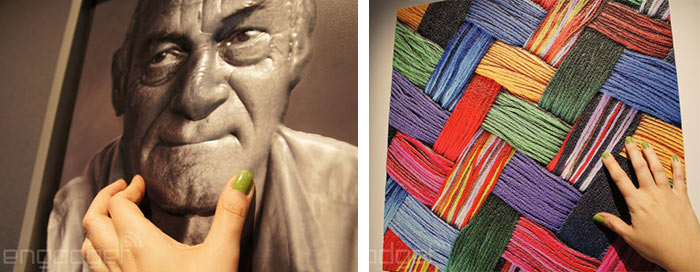Canon's EXPO 2015 New York event was held late last week. At the event Canon invited attendees to 'See Impossible' and it showcased new technology for photography, film, printing and other imaging-related activities and industries. We already covered news about Canon's 250-megapixel APS-C sensor, from the run-up to the event, able to capture images in incredible detail. But what about outputting images with equally incredible detail?

At the Expo Canon showed off various prints outputted using its material appearance image-processing technology. Above you can see that the output system is very flexible and capable of reproducing great image detail and outputting with textural detail and in metallic inks.
Feel the art
Canon first has to capture the surface qualities of images using multiple digital cameras. The cameras capture the main image and surface material appearance information such as its gloss, plasticity, surface contours and transparency. The accuracy of Canon's capture and output is claimed to be good enough to "reproduce historically significant oil paintings and other valuable cultural properties," with faithful material appearance to boot. With reproductions so precise, Canon suggests that galleries could, for example, "allow viewers to experience new ways of art appreciation by feeling the reproduced artwork, while enabling the original artwork to be preserved under optimal storage conditions".
In addition to the above (the gold leaf screen and painting, as published on the Canon Blog), Engadget went to the Expo where Canon had a diverse range of further examples of this 2D/3D hybrid UV-curable ink jet printing tech. As you can see below, EXPO attendees could stroke the chin of someone in a printed photo or feel the texture of some fabric-based art.

Canon says its material appearance image-processing and output technology could be developed for use in wallpapers, advertising signage and product packaging.













